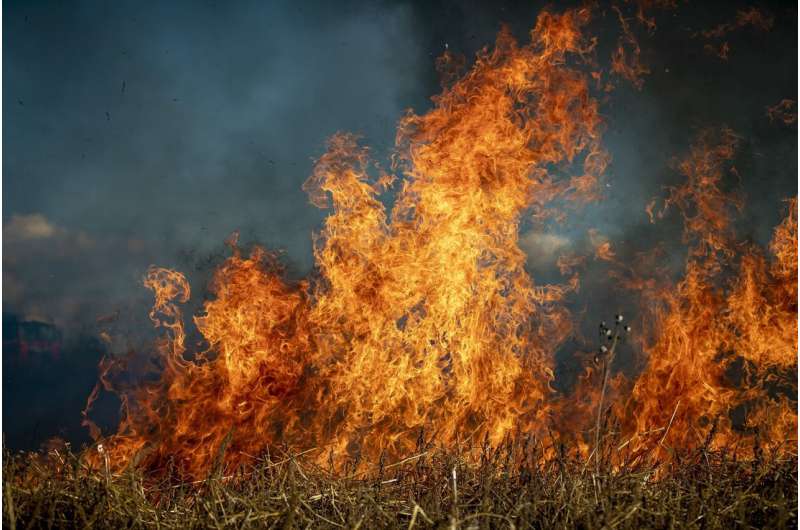This article has been reviewed according to Science X's editorial process and policies. Editors have highlighted the following attributes while ensuring the content's credibility:
fact-checked
peer-reviewed publication
proofread
Study estimates toxic emissions from wildland-urban interface fires

Fires in the wildland-urban interface (WUI) emit more toxic smoke than wildfires burning in natural vegetation, due to the chemicals in the structures, vehicles, and other manufactured goods that burn in fires in areas of human habitation.
Amara Holder and colleagues surveyed the literature on emissions from urban fuels, finding 28 experimental studies that reported emission factors—emissions per unit of fuel burned—for various items, such as home furnishings, consumer electronics, and vehicle components. Using data from the 28 studies, the authors compared the emissions factors for burning urban materials with those for burning vegetation. The researchers published their findings in the journal PNAS Nexus.
Some chemicals, including carbon monoxide, carbon dioxide, and particulate matter, are emitted from both types of materials at similar levels. Landscape fires tend to emit more methane, formaldehyde, and acrolein, which are produced in abundance by burning vegetation. However, many hazardous chemicals are emitted at higher levels from burning WUI materials.
Emission factors for inorganic gases and volatile organic compounds are one to three orders of magnitude greater from urban fuels than vegetation. Hydrochloric acid and polycyclic aromatic hydrocarbons (PAHs) have emission factors that are three orders of magnitude higher in WUI materials than landscape vegetation and dioxins and furans are five and six orders of magnitude higher in WUI materials than landscape vegetation, respectively.
The authors estimate total emissions from several real WUI fires and found that highly destructive WUI fires, where thousands of homes are burned, are likely a significant source of certain hazardous air pollutants—but not criteria air pollutants regulated by the Environmental Protection Agency.
More information: Amara L Holder et al, Hazardous air pollutant emissions estimates from wildfires in the wildland urban interface, PNAS Nexus (2023). DOI: 10.1093/pnasnexus/pgad186
Journal information: PNAS Nexus
Provided by PNAS Nexus




















